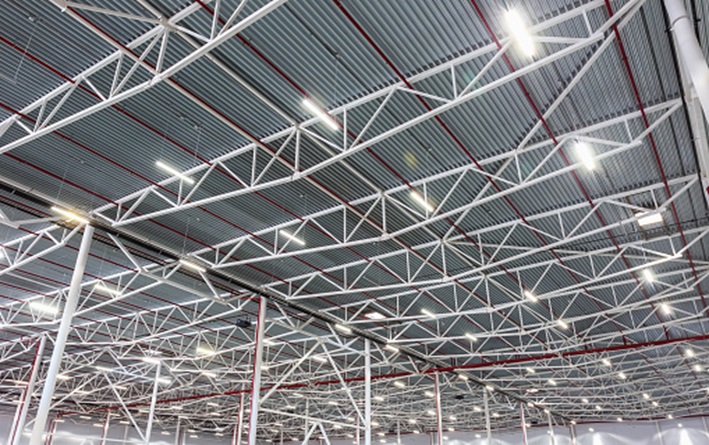Types of Industrial LED Lightings

Adequate lighting is of paramount importance for industrial settings and manufacturing plants. It plays a crucial role in their operations. LED lights have made it easier for industrial professionals to equip their facilities with proper lighting, and many industries have quickly adapted to this technology. One can get industrial LED lighting in various forms and designs for reaping many benefits.
Major industries are adopting all possible changes that can improve the quality and quantity of their products, and LED lighting is one of the ways to do so. Furthermore, the rapidly shifting economy is forcing industries to refurbish their lighting solutions to automate the processes. Numerous LED lighting fixtures are explicitly made for industrial settings, each with its own specifications that are highly suitable for manufacturing plants and other industries.
High-bay and mid-bay luminaries
You can get industrial LED lighting in the form of high-bay and mid-bay luminaires. These are among the most popular industrial lighting fixtures, especially in manufacturing plants with taller ceilings to accommodate heavy machinery and provide room for better ventilation. These LED luminaries are perfect for such applications. Hence, they are extensively used in warehouses, manufacturing facilities, and other applications. All industrial facilities have superior lighting and should meet regulatory standards.
The lighting system becomes more efficient with LED high-bay and mid-bay luminaries. These lights are brighter, cooler, and safer than conventional ones, thus making them an obvious choice for industrial applications. There is a wide range of high-performing LED luminaries available from many suppliers. Some are even engineered for excellent dissipation and are highly efficient to ensure that they provide maximum energy savings.
Floodlights
Floodlights are an important part of the lighting system in all industrial units, whether ports, warehouses, or manufacturing plants. These lights are luminaries that flood an area with light, and the intensity is far more increased when LED lights power flood light fixtures. Floodlight fixtures are usually used in parking lots of industrial facilities and industrial outdoors.
Pendant lights
Most manufacturing plants and warehouses have areas like alleys that require ample illumination. These areas can be perfectly illuminated using pendant lighting fixtures that effectively provide a contemporary feel. Pendant light fixtures are highly versatile and work best in cabins and meeting rooms of industrial units. Since these are installed in the same way as high-bay and mid-bay luminaries, they are also ideal for taller ceilings.
High mast
Most industrial units have larger outdoor areas for loading and unloading goods, raw materials, etc. These units also operate 24 hours a day and seven days a week. This makes it imperative that the outdoor area be well-illuminated. So the best lighting option for this is a high mast, which can achieve a high space-to-height ratio, thus leading to uniform illumination. High mast LED fittings are available across various heights for maximum illumination.
Automation
Since the lighting industry is significantly evolving to new products and technologies, automation has become the new norm. LED lights are inherently capable of integration with other devices over a network, because of which they are known as smart lighting fixtures. Such a system allows LED lights to be monitored and controlled from a single dashboard, mostly used by the facility manager. LED lights can also be paired with smart control sensors like occupancy sensors that can detect the presence or absence of people so that the lights can be turned on and off respectively.
Low bay fixtures
Low-bay fixtures are used in industrial spaces with a ceiling less than 20 feet above the ground. These lights use fewer lumens since they do not need a wide reach. These lighting systems are ideal for industrial spaces that are not too large and tall.
Area light fixtures
For security reasons, area light fixtures are used to illuminate areas that may otherwise be very dark, like darkened hallways in warehouses or parking lots. These fixtures can illuminate a concentrated area like a hallway or be mounted on a large pole.
Hazardous location lighting
Some industrial settings require more than regular lights. Industrial units like energy, mines, and manufacturing units require explosion-proof or hazardous location lights. The code refers to these lights as Class I, Div II or Class I, Div I. Hazardous location lights are heavy-duty industrial lights designed not to melt, explode or cause other issues. Therefore they are ideal for use in the toughest environments and slightly tough areas where dust, dirt, moisture, and other such risks may affect the durability of lights.
Conclusion
Industrial lighting fixtures are crucial for the proper operation of a facility. Increases in lighting levels in industries have been shown to improve employees’ productivity and increase the overall production of a unit. LED lights can give the facility ample illumination, thus leading to a safer work environment due to their uniform beam angle and high lumen output. LED lights also keep energy costs in check. These lights are maintenance-free, thus further reducing the operating cost of a facility.